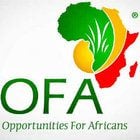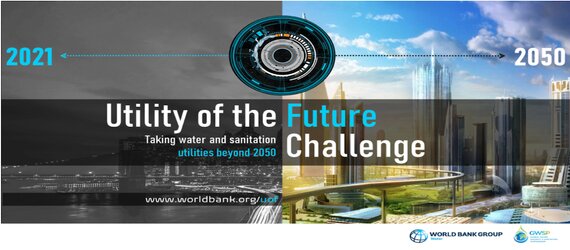Application Deadline: August 6, 2021
What do you think the water utility of the future will look like? Will it feature drones that inspect pipes internally and fix leakages? Will customer feedback be collected automatically and inform service changes? Will you be able to pay for services using cryptocurrency? Or will it entail the existence of contingency plans that are informed by the latest climate data? There are persistent problems that utilities face every day that limit their ability to provide water supply in their service areas.
These problems span from challenges in covering operational costs, to inability to supply water 24 hours a day to all residents. These challenges are being exacerbated by the effects of climate change and other threats such as COVID-19. Therefore, it’s more important than ever to think outside the box and not only focus on immediate needs but rather about taking utilities beyond the next level and fostering long-lasting changes that will allow utilities to deal with short-term and long-term challenges and provide safe and reliable universal water supply and sanitation services. The recently launched Utility of the Future (UoF) Program entails a close collaboration between the World Bank and utilities, with the end goal of igniting a transformative process that allows utilities to reach a desired performance and maturity level by applying international best practices throughout its value chain. Moreover, this approach allows utilities to craft their own path to reach their vision of the future.
Your mission – should you choose to accept it:
The Utility of the Future challenge invites you to imagine the future (2050) where water utilities are providing reliable, safe, inclusive, transparent, and responsive WSS services through best-fit practices that allow them to operate in an efficient, resilient, innovative and sustainable manner. But the challenge does not stop at envisioning the future; you must also come up with a strategy to fulfill your vision. Put on your thinking cap and help a utility in trouble become a Utility of the Future.
Benefits
Bragging rights at the upcoming World Water Week hosted by the Stockholm International Water Institute (SIWI) being held from August 23-27; the opportunity to participate and present your idea at the 2022 World Bank Water Week; meeting World Bank’s senior water experts to grow your network and discuss the latest trends in water and sanitation; and last but not least – being shortlisted for a winter internship with the WB Utility of the Future team so you can help real utilities travel to 2050.
The UoF Challenge:
This is the roadmap you must follow – don’t worry, you’ll have plenty of space to be wildly creative!
Part A: The future today
- Step 1: The Utility of the Present – understand your client
UOTP-WSS is the utility serving the city of Dryland – this is a made-up scenario; don’t try to book flights to Dryland. They are facing tremendous challenges because of climate change, the COVID-19 pandemic, and weak financial management. However, they have the ambition of becoming a Utility of the Future and being an example to other utilities around the world. They chose to apply the Utility of the Future framework (www.worldbank.org/uof) to understand their current situation and come up with an action plan to reach a desired performance and maturity level. The file in this link contains all the information that you need to know about the utility to proceed with the challenge. This includes a narrative about the specific challenges that the utility is facing, and data from the UoF assessment that provides a diagnosis of the five key utility performance elements: technical, commercial, HR, and financial management; and organization and strategy. Based on your understanding from the assessment you need to choose, in your opinion, the three most pressing challenges for the utility. No wrong answers here! But make sure to read carefully and remember the repercussions of the butterfly effect in time travel! You can always go back to the Utility of the Future homepage in case you need more context about the tool.
- Step 2: Tell us about what’s cool and trendy and how it can help UOTP-WSS
So, you have a pretty good idea of what are the three main challenges that the utility is facing. Now the fun part: You would need to think about innovative practices to overcome each of the challenges you chose and put the utility on the path to become a Utility of the Future. For example, you can argue that utilities should use 3D printing technologies to improve asset management; that AI could be used to predict where the next pipe burst is going to occur; or that social media monitoring tools can be used to better understand all customer needs and preferences and offer a better service. Your suggestions need to be grounded on emerging and disrupting trends/technologies – meaning, they must exist! Remember, innovation doesn’t necessarily mean all cutting-edge technology and living in a Star-Trek like world; it can be alternative practices to ensure inclusion of marginalized populations, incentive mechanisms to save water, or any other ideas that come to mind.
Part B: Imagine the UoF
- Step 3: Imagine the future:
We want you to think about what the water utility of the future would look like in 2050. How do you imagine they would carry out the technical, commercial, HR, financial and organizational processes? This is an opportunity to really envision a futuristic utility and communicate that succinctly and practically.
- Step 4: Back to the present:
Finally, you will need to come up with a strategy from 2021 to 2050 to turn your vision (step 3) into reality. What should the utility focus on in the short and long-term? You can use the 15-steps planning approach included in the UoF Framework as a guide for this task but it’s not mandatory.
Evaluating your time-traveling skills:
A multidisciplinary team from the World Bank will review and rate the proposals based on the following criteria:
Part A: The future today
- Step 1: Selection of the three challenges/areas for improvement based on the assessment given (10%)
- Step 2: Identification of innovative practices to address the challenges identified for the utility based on emerging and disrupting trends/technologies (40%)
Part B: Imagine the UoF
- Step 3: Narrative about what the water and sanitation utility would look like in 2050 (20%)
- Step 4: Action plan to materialize the strategy 2021 to 2050 (30%)
Application Terms:
Team: Groups of 2 to 3 people. Make sure your group is diverse and inclusive!
Participants’ age: Max 30-years old
Application Deadline: Aug 6, 2021
For More Information:
Visit the Official Webpage of the World Bank Utility of the Future Challenge

